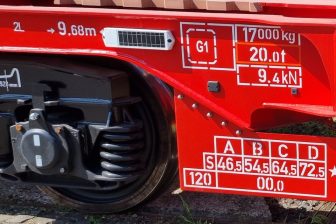
Indian Railways to deploy aeroplane-inspired mixed cargo wagons
Indian Railways plan to deploy mixed cargo-passenger wagons, which can accommodate up to six tonnes of freight each. The wagons will use the belly freight concept, which is very popular in air transportation. Production has already started, and if the testing phase proves successful, Indian Railways aim to produce 40 such wagons that will comprise two 20-wagon mixed trains.
The first mixed cargo-passenger test train will be launched sometime during August. Interestingly enough, the hybrid wagons were designed during the Covid-19 lockdowns when Indian Railways was gaining most of its revenue from cargo services since passenger trains were on the low.
The publication The New Indian Express quoted officials from Indian Railways explaining that the new wagon model will be a double-decker. On the top deck, there will be enough space to accommodate 46 passenger seats, toilets and a refreshments station. On the lower deck, all the room will be dedicated to freight covering a capacity of up to six tonnes.
Moreover, the same officials said that the goal is to roll the hybrid trains as “cargo liners that will run regularly as scheduled services on fixed routes between designated points while carrying consignments of various commodities.”
The belly freight concept
The way that these hybrid cargo-passenger wagons were designed draws inspiration from aeroplanes. “Belly cargo is freight that is stored under the main deck of an aeroplane. We used this concept in designing this wagon”, explained the designers, who also mentioned that it is not unusual to see similar solutions in sea shipping.
However, the concept also bears some limitations. For instance, it is not possible to transport certain types of goods that could prove dangerous for passengers. Additionally, the measurements of cargo pieces are also critical since there is a weight and height limit to be able to fit in the wagon’s lower deck.
Finally, a thing that would change if such mixed trains were officially deployed concerns security checks prior to departure. Understandably, the presence of passengers and cargo in the same wagon presupposes expended and stricter controls that are also more time-consuming. Ultimately, such a solution is interesting for smaller-scale transport on fixed routes. For instance, parcels could be a good candidate to onboard the trains.
Also read:



